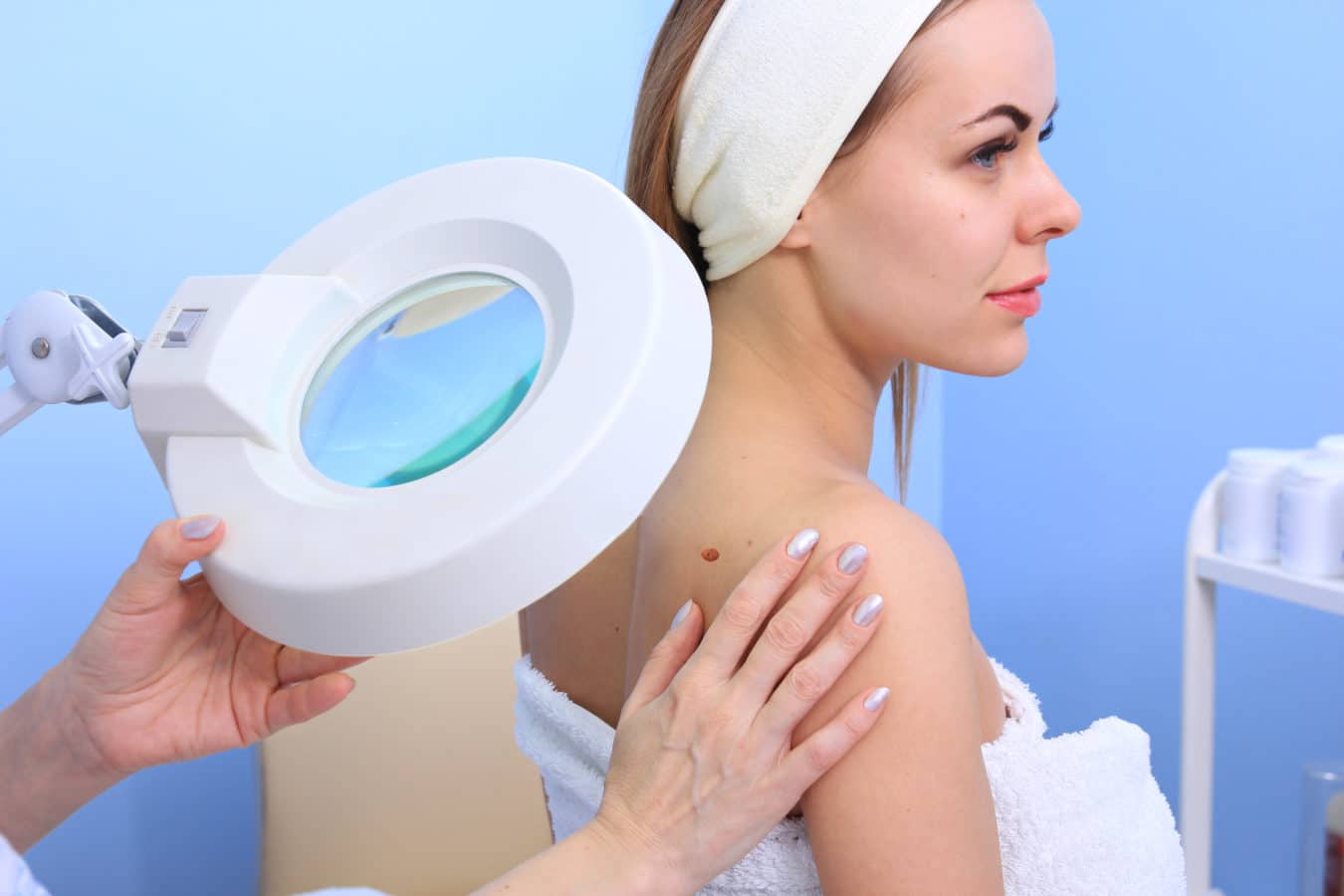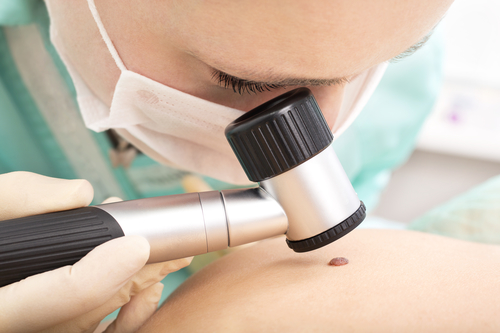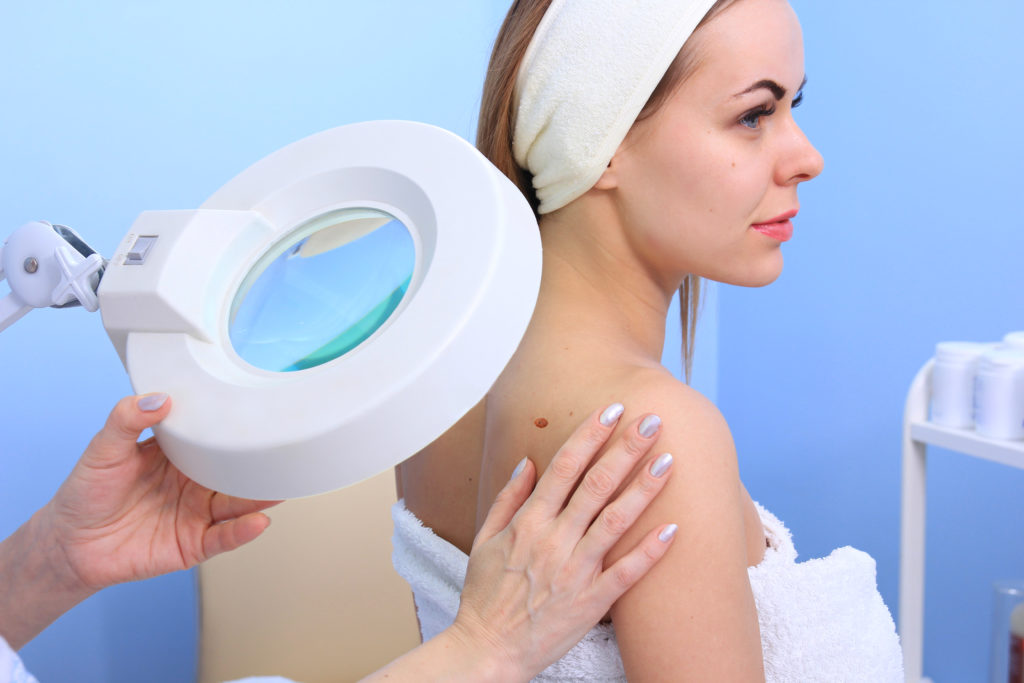
Summer is almost in full swing! Before you start laying out this beach season, be sure get your annual skin exam. Skin checks for abnormal moles or growths are basic sun safety that should be practiced year-round. Spending time in the sun can bring out freckles and spots you didn’t even know you had. It can be hard to determine which spots are normal, or if they need to be checked out. However, it is imperative that when something odd does appear gets diagnosed and treated correctly.
The skin is the largest organ of the body, and more people are diagnosed with skin cancer than any other form. Fortunately, checking our bodies for signs of skin cancer is as easy as singing the ABC’s.
- Asymmetry: One half is unlike the other half.
- Border: Irregular, scalloped or poorly defined.
- Color: Varies from one area to another. Shades of dark purple, blue or black; sometimes red or white.
- Diameter: While skin cancer varies and grows rapidly; melanomas are usually larger than the size of a pencil eraser (6mm).
- Elevation: If your mole is not smooth or extremely raised, it could be a cause for concern.
Skin cancer tends to cause changes, so any visible change to the mole, especially over a short period of time, maybe cause for concern. If you have a concerning spot that meets any of these conditions, don’t hesitate to see a dermatologist.


 Summer is over, and the amount of time we are spending outside is dwindling. As the tans fade, many will turn to tanning beds to contain the sun-kissed glow to the skin. Everyone knows that tanning beds are bad for you, but just a few times won’t hurt, right? Wrong. Just one use of the tanning bed dramatically increases your chances of developing a form of skin cancer. When detected early, skin cancer is highly treatable, but if left unnoticed, there can be seriously, lasting and reoccurring problems. Here is a breakdown of the different types of skin cancer, how to tell the difference and when to know it’s time to see a dermatologist.
Summer is over, and the amount of time we are spending outside is dwindling. As the tans fade, many will turn to tanning beds to contain the sun-kissed glow to the skin. Everyone knows that tanning beds are bad for you, but just a few times won’t hurt, right? Wrong. Just one use of the tanning bed dramatically increases your chances of developing a form of skin cancer. When detected early, skin cancer is highly treatable, but if left unnoticed, there can be seriously, lasting and reoccurring problems. Here is a breakdown of the different types of skin cancer, how to tell the difference and when to know it’s time to see a dermatologist.


